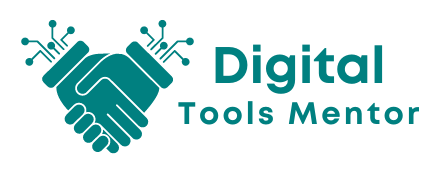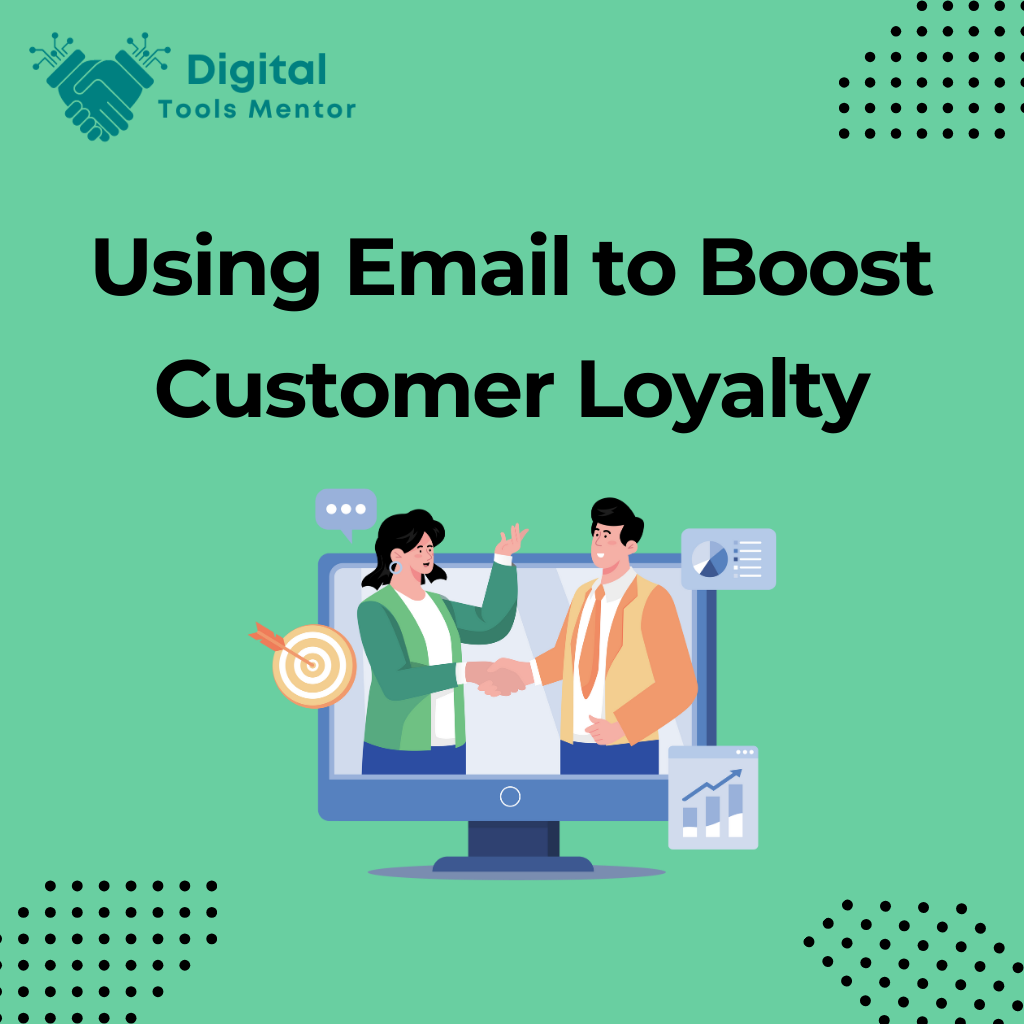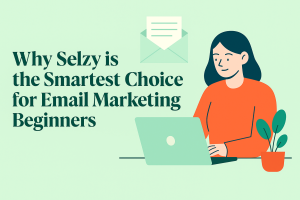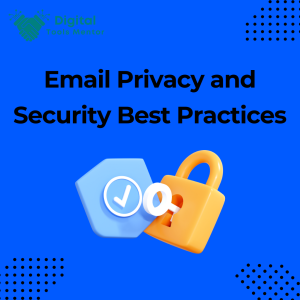Using Email to Boost Customer Loyalty
In the bustling world of e-commerce and digital marketing, customer loyalty refers to the ongoing relationship between a business and its customers, characterized by repeated interactions and purchases. This loyalty is not merely the result of chance; it’s cultivated through consistent, positive experiences that resonate with customers on a personal level. Unlike one-time transactions, loyal customers believe in the brand, often resulting in repeated business and referrals, which are invaluable in a digital marketplace crowded with options.
The essence of customer loyalty in e-commerce lies in creating a sense of belonging and connection through personalized interactions. When businesses understand and anticipate the needs and preferences of their customers, they can tailor their offerings accordingly, thereby increasing the likelihood of repeat purchases. This level of personalization is made possible by leveraging data analytics and customer insights, which are readily available through digital platforms.
The importance of customer loyalty extends beyond mere repeat business; it is a cornerstone of business sustainability. Loyal customers often provide a higher lifetime value and can be less expensive to serve than continuously acquiring new ones. They also tend to be more forgiving of minor errors and are more likely to engage in constructive feedback, which can lead to improvements in products or services. Moreover, in the age of social media, they become advocates for the brand, sharing their positive experiences and influencing new customers in a way that traditional advertising cannot match.
Thus, in the digital age, fostering customer loyalty is not just a marketing strategy but a fundamental aspect of maintaining a competitive edge and ensuring long-term business viability.
The Role of Email in Customer Engagement
Email marketing remains a standout tool in the digital marketing arsenal, primarily due to its direct and personal nature. Unlike other channels that are subject to algorithm changes and varying user behaviors, email provides a stable and controlled medium for reaching out to customers directly in their personal inboxes. This direct line to customers is invaluable for creating meaningful and sustained engagement.
Advantages of Email for Continuous Customer Engagement:
- Direct and Personal Connection: Email allows businesses to communicate directly with customers on a one-on-one basis. This personal touch is crucial for building trust and rapport. Tailored messages that address customers by name, acknowledge their preferences, and reflect their previous interactions with the brand make the communication feel more personal and less like a broad broadcast.
- Segmentation and Targeting: One of email marketing’s most significant advantages is the ability to segment audiences based on various criteria such as purchase history, behavior, demographics, and more. This segmentation enables businesses to craft messages that are extraordinarily relevant and engaging to different groups, increasing the effectiveness of their marketing efforts.
- Cost-Effectiveness: Email marketing offers one of the highest return on investment (ROI) rates across digital marketing tools. Its cost-effectiveness makes it an accessible tool for businesses of all sizes, allowing even small to medium enterprises to compete with larger companies in customer engagement.
- Measurability: With email marketing, it’s easy to track opens, clicks, and conversions. This measurability allows businesses to understand precisely how well their emails are performing, which strategies are working, and what needs improvement. Such data-driven insights enable continual optimization of email campaigns for better performance.
- Automation: Automated emails can be triggered by specific customer actions, such as signing up for a newsletter, making a purchase, or abandoning a shopping cart. These automated messages ensure timely and relevant engagement, making customers feel noticed and valued without substantial manual effort from the business side.
- Long-Term Relationship Building: Regular newsletters and updates provide ongoing touchpoints with customers. These communications keep the brand top-of-mind and nurture long-term relationships by continuously offering value beyond the point of sale, whether through informative content, insider perks, or exclusive offers.
In conclusion, email marketing’s ability to facilitate targeted, personal, and cost-effective communication makes it an essential tool for nurturing lasting customer engagement. Its role is crucial in not just reaching customers but in keeping them engaged, satisfied, and loyal over time.
Explore 23 Best Email Marketing Platforms in 2025
Personalization is Key
In today’s saturated digital marketplace, personalization in email marketing is not just beneficial—it’s essential. Customers are bombarded with countless generic advertisements every day, making personalized content a critical differentiator that can capture attention and foster loyalty. Personalization makes customers feel recognized and valued as individuals, which can significantly enhance their engagement and propensity to remain loyal to a brand.
Importance of Personalized Emails:
- Enhanced Relevance: Personalized emails resonate more because they are relevant to the individual’s needs and interests. When customers receive content that aligns with their behaviors and preferences, they are more likely to find value in the communication, leading to higher engagement rates.
- Increased Open and Click-Through Rates: Emails that include personalized subject lines or content tailored to the recipient often see higher open and click-through rates. Customers are more inclined to interact with messages that feel specifically crafted for them.
- Stronger Customer Relationships: By demonstrating attention to customer preferences and prior interactions, businesses can build deeper relationships. This rapport fosters a sense of loyalty and trust, which are foundational to customer retention.
Examples of Personalization Techniques:
- Using the Customer’s Name: This is the simplest form of personalization. Including the customer’s name in the email’s greeting or subject line immediately makes the communication more personal and engaging.
- Behavior-Based Personalization: Sending emails based on customer actions, such as browsing certain products, abandoning a shopping cart, or previously purchased items, can significantly increase relevance. For example, if a customer looked at kitchenware but didn’t make a purchase, sending them an email with a discount code for that specific category can re-engage them.
- Segmentation: Divide your email list into segments based on demographics (age, location), psychographics (interests, values), or behavioral data (purchase history, email engagement). Tailor your messaging to these segments to enhance relevance. For instance, sending weather-appropriate clothing suggestions based on the customer’s geographic location.
- Personalized Recommendations: Utilize data from past purchases to recommend related or complementary products. For example, if a customer bought a camera, follow-up emails could suggest purchasing a camera bag or lens cleaning kit.
- Anniversary or Milestone Emails: Celebrate milestones like the anniversary of a customer’s first purchase or their signup date with a special offer or message. This not only personalizes the experience but also makes the customer feel appreciated and remembered.
- Dynamic Content: Dynamic content changes based on the user’s data. For example, an email can display different images or offers depending on the user’s age, gender, or past interaction with the website.
Implementing these personalization techniques in email campaigns requires a robust data collection and analysis strategy but can lead to significantly improved customer satisfaction and loyalty. The goal is to make every customer feel like the email was crafted just for them, which fosters a stronger connection to the brand and encourages repeat business.
Exclusive Offers and Discounts
Email marketing excels in fostering loyalty by delivering exclusive offers and discounts directly to subscribers’ inboxes. These tailored promotions not only incentivize repeat purchases but also make subscribers feel valued and special, a key ingredient in deepening brand loyalty.
Enhancing Loyalty through Exclusive Email Offers:
- Sense of Exclusivity: Exclusive offers create a sense of belonging to a privileged group, which can significantly enhance customer loyalty. When customers know that subscribing to your emails gives them access to deals that aren’t available to the general public, they are more likely to stay engaged and anticipate your messages.
- Increased Purchase Frequency: By offering exclusive discounts, you encourage customers to make purchases they might otherwise defer. This can increase the overall purchase frequency within your customer base, driving more consistent revenue.
- Direct Communication Channel: Exclusive email offers keep the communication channel active, ensuring that customers have a reason to open emails and interact with the brand on a regular basis. This continuous interaction helps to keep your brand top of mind.
Tips on Structuring Exclusive Offers to Feel Special:
- Time-Limited Deals: Create offers that are available for a limited time only. This not only adds an urgency to act but also maintains the exclusivity of the deal. For instance, a 24-hour flash sale for email subscribers can prompt immediate action.
- Subscriber-Only Benefits: Offer benefits that are exclusive to email subscribers, such as an additional percentage off sale items, early access to new products, or special bundles that aren’t available elsewhere. Highlight that these perks are a way of thanking subscribers for their loyalty.
- Personalized Discounts: Use the data you have on your subscribers to offer personalized discounts on products they’ve viewed or shown interest in but haven’t purchased. This kind of targeted promotion feels more relevant and is likely to be more effective.
- Tiered Loyalty Rewards: Introduce a loyalty program that increases the benefits with the subscriber’s purchase history. For example, “silver” tier subscribers might get 10% off their purchases, while “gold” tier subscribers get 15%. This motivates subscribers to move up the tiers by purchasing more.
- Exclusive Previews and Content: Alongside discounts, offer exclusive content or previews of upcoming products. This could include early access to a sale, a sneak peek at a new collection, or the ability to pre-order items before they are publicly available.
- Clear and Attractive Presentation: Make sure that the offers are presented in a visually appealing way in the email. Use high-quality images, clear call-to-action buttons, and a layout that highlights the exclusivity and value of the offer.
- Celebrate Milestones: Recognize and reward customer loyalty milestones, such as the anniversary of a customer’s first purchase or their nth purchase. These can be celebrated with special discounts or gifts, underscoring how much you value their continued business.
By carefully crafting and presenting exclusive offers and discounts through email, businesses can significantly enhance customer loyalty. These special deals not only reward subscribers but also reinforce the benefits of staying connected with your brand, thereby fostering a loyal and engaged customer base.
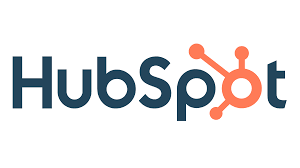
Rewarding Loyalty
A well-structured loyalty program can significantly enhance customer retention by rewarding continued patronage. Email is an ideal channel for managing and promoting such programs, as it allows for regular, direct communication with your most engaged customers. Here’s how to use email to manage loyalty programs effectively and some examples to inspire your strategy.
Introducing Loyalty Programs Through Email:
- Regular Updates: Use email to keep your customers informed about their loyalty program status, such as point balances, potential rewards, and upcoming opportunities to earn more points. Regular updates not only keep the program top of mind but also encourage continual engagement with your brand.
- Personalized Progress Reports: Send personalized emails that detail a customer’s progress within the loyalty program. For example, you might send a monthly email summarizing how many points they earned, what rewards are available, or how close they are to reaching the next tier.
- Exclusive Communication: Make your loyalty members feel special by using email to communicate exclusive updates or offers only available to program participants. This can include early product releases, special discounts, or invitations to members-only events.
Examples of Loyalty Programs Managed Through Email:
- Point Systems: Implement a point system where customers earn points for each purchase, which can then be redeemed for discounts, gifts, or other benefits. Use email to send automated updates about points earned and redeemed, tips on how to earn more points, and reminders of points about to expire.
- Early Access to Products: Offer loyalty program members the opportunity to purchase new products before they are available to the public. Announce these early access events via email and provide a direct link where members can view and buy new products first. This not only rewards members but also boosts sales during the critical initial launch phase of a product.
- Special Member-Only Events: Host events such as webinars, workshops, or even in-person gatherings exclusively for loyalty members. Use email to send invitations, provide event details, and follow up with additional content or offers related to the event. These events can enhance community feeling and attachment to the brand.
- Tiered Rewards: Create a tiered system where customers can ascend to higher levels of rewards based on their engagement or purchase history. Email can be used to congratulate customers on reaching a new tier, explain the additional benefits they now qualify for, and encourage them to enjoy their new perks.
- Birthday and Anniversary Bonuses: Acknowledge special occasions like a customer’s birthday or the anniversary of their joining the loyalty program with bonus points or exclusive offers. An automated email greeting that includes a personalized offer can make customers feel valued on their special day.
- Feedback Incentives: Encourage feedback on products or services by offering loyalty points in exchange for completing surveys. Email these offers and make it easy for customers to participate directly through the email.
By leveraging email communications, you can effectively manage a loyalty program that not only rewards customers but also continuously engages them, enhancing their connection with your brand. This approach not only incentivizes purchases but also fosters a deeper, more rewarding relationship between your customers and your business.
Regular Updates and Newsletters
Regular updates and newsletters are foundational elements of effective email marketing. They serve as crucial touchpoints that keep your customers informed and engaged with your brand over time. Consistent communication through these channels ensures that your business remains relevant and top-of-mind, fostering a sense of ongoing relationship that can lead to increased customer loyalty and sales.
Importance of Keeping Customers Informed:
- Maintaining Engagement: By regularly sending out newsletters and updates, you keep your audience engaged with fresh, relevant content. This consistent engagement helps maintain a connection with customers, reminding them of your brand’s presence and value, even when they are not actively looking to make a purchase.
- Educational Content: Updates and newsletters can educate your customers about your products or services, providing valuable information that can enhance their understanding and appreciation of what you have to offer. Educational content can include how-to guides, tips, industry news, or updates about your company’s achievements and innovations.
- Building Brand Authority: Regularly providing helpful and informative content can establish your brand as an authority in your industry. When customers see your company consistently contributing valuable insights, they begin to trust your expertise and are more likely to turn to you when they need the products or services you offer.
How Regular Communication Keeps Your Brand Top-of-Mind:
- Consistency: Consistent communication schedules, such as weekly or monthly newsletters, help customers know when to expect new information from you, creating a routine that includes your brand. This consistency helps embed your brand in customers’ lives, making it more likely that they will think of you first when they need a related product or service.
- Personalization: Tailoring the content of your updates to meet the interests and needs of your audience can significantly enhance the effectiveness of your communication. Using segmentation and data analytics to personalize content ensures that the information is relevant, which can increase open rates and engagement.
- Promotions and Updates: Newsletters are an excellent medium for sharing promotions, special deals, and general updates about your business. Exclusive offers, such as discounts or early access to new products, keep customers excited about what’s coming next and encourage them to stay connected with your brand.
- Customer Stories and Testimonials: Featuring customer stories or testimonials in your newsletters can create a sense of community and show prospective customers the benefits of your products or services through real-life examples. This type of content not only adds authenticity to your brand but also resonates deeply with readers, reinforcing their decision to stay loyal to your brand.
- Invitations to Participate: Encourage interaction by inviting customers to participate in surveys, feedback sessions, or social media contests. Engaging customers in this way makes them feel like part of your brand’s community, enhancing their emotional connection and loyalty to your brand.
- Visual and Interactive Content: Including visually appealing images, videos, or interactive elements like polls or quizzes can make your newsletters more engaging and enjoyable for recipients. This type of content can help your brand stand out and ensure that your communications are memorable.
By strategically using regular updates and newsletters, you can keep your customers well-informed and engaged, ensuring that your brand remains relevant and top-of-mind. This consistent interaction is key to building a long-term relationship with your audience, ultimately leading to sustained customer loyalty and increased business growth.
Requesting and Acting on Feedback
Feedback is an invaluable resource for any business, offering direct insights into customer satisfaction and areas for improvement. Email is an exceptionally effective tool for soliciting this feedback because it allows for personal, direct communication that can be easily scaled and automated. Actively seeking and then acting on customer feedback demonstrates a commitment to continuous improvement and customer satisfaction, which are critical for building trust and loyalty.
How to Use Emails to Solicit Feedback from Customers:
- Post-Purchase Surveys: Send a follow-up email shortly after a purchase or interaction, asking customers to complete a brief survey about their experience. Ensure the process is quick and straightforward by using rating scales or multiple-choice questions, with an option to provide more detailed feedback if they wish.
- Feedback Incentives: To increase response rates, consider offering an incentive for completing the survey, such as a discount on their next purchase, entry into a contest, or a freebie. Clearly communicate this incentive in the email to motivate participation.
- Segmentation for Relevance: Tailor feedback requests based on customer behavior or purchase history to ensure relevance. For instance, asking for product-specific feedback from customers who recently purchased that item, or service feedback from those who interacted with support.
- Personalization: Address customers by name and make references to specific products or services they’ve used. Personalized emails feel more genuine and are likely to elicit a more enthusiastic response.
- Open-Ended Questions: While structured questions are great for quantitative analysis, open-ended questions can yield richer, more detailed insights. Include one or two such questions to allow customers to express their thoughts freely.
The Importance of Acting on Feedback to Improve Services or Products:
- Enhancing Product Quality: Feedback can provide direct insights into what’s working and what isn’t with your products. This information is crucial for making adjustments that enhance quality and, consequently, customer satisfaction.
- Improving Customer Experience: Responses about customer service interactions, website usability, or purchase processes can highlight areas needing improvement, helping to streamline operations and enhance the overall customer experience.
- Demonstrating Commitment: When customers see that their feedback leads to tangible changes, they feel valued and respected. This acknowledgment can turn even dissatisfied customers into loyal advocates, as they appreciate a brand that listens and responds to their needs.
- Strategic Decision-Making: Aggregated customer feedback can inform broader business decisions, helping to align product development, marketing strategies, and customer service policies with actual customer preferences and expectations.
- Continuous Relationship Building: Regularly requesting feedback keeps the communication lines open, encouraging ongoing interaction. This continuous engagement helps maintain a dynamic relationship where customers feel involved in the brand’s journey.
- Public Sharing of Improvements: Communicate the changes made based on customer feedback through follow-up emails or newsletters. This transparency not only shows accountability but also reinforces the value of customer input.
By effectively soliciting and acting on feedback through email, businesses can make informed improvements that enhance product quality and customer satisfaction. This proactive approach not only solves immediate issues but also contributes to long-term business success by fostering a loyal customer base that feels heard and valued.
Birthday and Anniversary Emails
Celebrating personal milestones such as birthdays and anniversaries with your customers can significantly enhance their emotional connection to your brand. These special occasions offer a unique opportunity to personalize your interaction and show customers they are valued beyond just their transactions. Tailored birthday and anniversary emails are not only a delightful surprise that can make your customers feel special, but they also encourage increased engagement and loyalty.
Impact of Celebrating Personal Milestones:
- Personal Touch: Recognizing a customer’s birthday or the anniversary of their first purchase adds a personal touch that can differentiate your brand from competitors. This personal acknowledgment helps customers feel connected to your brand on a more intimate level.
- Enhanced Customer Loyalty: By celebrating these milestones, you show that you value the relationship, which can strengthen customer loyalty. Emotional loyalty is powerful; it can lead to more frequent purchases, higher lifetime value, and enthusiastic word-of-mouth promotion.
- Increased Engagement: Birthday and anniversary emails typically see higher engagement rates, including open and click-through rates. These emails often include special offers or gifts, which encourage customers to interact with the content and make a purchase.
Examples of How These Gestures Boost Emotional Loyalty and Connection:
- Special Discounts or Gifts: Offer a special discount, free gift, or exclusive content as a birthday or anniversary present. For example, you might send a 20% off coupon valid during their birthday month or give them free shipping on their next order as an anniversary gift. These offers not only encourage sales but also make the recipients feel appreciated.
- Personalized Messages: Tailor the email content to reflect the individual’s relationship with your brand. Mention how long they’ve been a customer and highlight specific products they frequently purchase or show interest in. This shows that you pay attention to their preferences and value their patronage.
- Invitations to Exclusive Events: Invite customers celebrating a birthday or anniversary to an exclusive event, whether it’s an online webinar, a special in-store event, or a preview of new products. This not only makes them feel special but also deepens their connection with your brand by involving them in unique experiences.
- Loyalty Points Boost: Offer additional loyalty points on purchases made during the customer’s birthday month or on the anniversary of their first purchase. This can incentivize them to make additional purchases while making the loyalty program more engaging.
- Interactive Content: Include interactive elements like a video message wishing them a happy birthday or a quiz that reveals a personalized recommendation based on their preferences. Interactive content can make these emails more engaging and memorable.
- Celebratory Stories: Share a story or message that aligns with the celebration theme, such as customer success stories or a thank-you message from the CEO. These stories can enhance the emotional impact of the email and reinforce the sense of community among your customers.
By incorporating these personalized gestures into your email marketing strategy, you can significantly enhance the emotional loyalty and connection that customers feel toward your brand. Birthday and anniversary emails not only celebrate important milestones but also foster a deeper, more emotionally driven relationship with your customers, encouraging long-term engagement and loyalty.
Utilizing Automation for Timeliness and Relevance
Automation in email marketing is a powerful tool for delivering timely and relevant content to customers based on their specific actions and behaviors. By setting up automated email triggers, businesses can engage customers at critical moments, enhancing the overall customer experience and nurturing loyalty. This approach ensures that communications are not only consistent but also highly personalized and impactful.
Automated Email Triggers Based on Customer Actions:
- Cart Abandonment Emails: These are triggered when a customer adds items to their online shopping cart but leaves the site without completing the purchase. An automated email can be sent a few hours or a day later, reminding them of the items they left behind and perhaps offering a small discount or free shipping to encourage completion of the purchase.
- Browsing History Emails: When customers browse specific products or categories without making a purchase, automated emails can be sent to highlight those products, offer more information, or suggest similar items that might interest them. These emails can help reignite their interest and guide them back to the website to make a purchase.
- Welcome Emails: Automatically sent to new subscribers or customers immediately after they sign up or make their first purchase, welcome emails set the tone for the relationship. They can provide useful information about the brand, introduce loyalty programs, or offer a first-purchase discount.
- Re-engagement Emails: Triggered when a customer hasn’t interacted with the brand over a set period, re-engagement emails aim to revive their interest. These might include updates on new products, a recap of what they’ve missed, or an exclusive offer.
- Anniversary or Milestone Emails: Automatically sent on the anniversary of a customer’s first purchase or sign-up date, these emails celebrate the duration of the relationship. They might include special offers or reflect on their journey with the brand.
Benefits of Automation in Email Marketing:
- Timeliness: Automated emails are sent at optimal times based on customer actions, ensuring that the message is relevant to their recent experiences or decisions. This timeliness increases the likelihood of the emails being opened and acted upon.
- Relevance: Since automated emails are triggered by specific actions, they are highly relevant to the recipient. This personal relevance makes the content more engaging and effective, directly addressing the customer’s interests or needs.
- Efficiency: Automation allows for continuous engagement without the need for constant manual effort. Once set up, these systems require minimal maintenance, making them a cost-effective solution for maintaining customer relationships.
- Scalability: Automated email systems easily scale with your business, handling increasing volumes of emails without additional cost or effort in terms of personnel. This scalability ensures that every customer interaction is handled no matter how large the customer base grows.
- Enhanced Customer Experience: By providing timely and relevant interactions, automated emails enhance the overall customer experience. They show that the brand understands and anticipates the needs of its customers, which can significantly boost customer satisfaction and loyalty.
- Data Collection and Insights: Automation systems collect data on customer interactions and behaviors, providing valuable insights that can be used to refine marketing strategies and better understand customer preferences.
Utilizing automation in email marketing not only enhances the efficiency of communications but also significantly improves their effectiveness. By delivering timely and relevant content, businesses can create more meaningful interactions that foster loyalty and drive conversions.
Measuring Email Impact on Loyalty
Assessing the effectiveness of your email campaigns in fostering customer loyalty involves tracking specific metrics that indicate engagement, satisfaction, and repeat behavior. These metrics provide insights into how well your emails resonate with your audience and contribute to long-term customer relationships. Accurate measurement and analysis can guide adjustments to your strategy, enhancing the overall impact of your email marketing efforts.
Key Metrics to Track in Email Campaigns:
- Open Rates: The open rate measures the percentage of recipients who open an email. It is a primary indicator of how compelling your subject lines are and whether your emails are reaching the right audience at the right time. Consistently high open rates suggest that your content is relevant and that your audience is engaged, which are important for customer loyalty.
- Click-Through Rates (CTR): CTR is calculated by the number of clicks on links within the email divided by the number of emails delivered. This metric indicates how engaging and persuasive your email content is and whether it successfully encourages readers to take action. High CTRs often correlate with effective content that resonates with the audience, prompting them to learn more about a product or offer.
- Conversion Rates: This measures the percentage of email recipients who click on a link within the email and complete a desired action, such as making a purchase or signing up for a webinar. Conversion rates help assess the direct impact of specific emails on your business goals and are critical for understanding how email campaigns drive loyalty through repeat purchases or engagement.
- Repeat Purchase Rates: Tracking how often customers who receive emails make repeat purchases can indicate the effectiveness of your email campaigns in fostering loyalty. Higher repeat purchase rates suggest that your email strategy successfully encourages ongoing engagement and purchasing.
- Unsubscribe Rates: While high unsubscribe rates are typically seen as negative, tracking them can provide insights into customer satisfaction and email relevance. A sudden increase in unsubscribes can signal that your content is not resonating with your audience or that emails are too frequent.
- Customer Lifetime Value (CLV): CLV estimates the total revenue a business can reasonably expect from a single customer account throughout their relationship with the company. Measuring changes in CLV in response to email marketing campaigns can provide insights into how these efforts are enhancing customer loyalty and value over time.
- Segment-Specific Engagement: Analyzing metrics across different customer segments can reveal which groups are most engaged and loyal. This allows for more targeted and effective email strategies that cater to the specific preferences and behaviors of different segments.
- Email Sharing/Forwarding Rates: When recipients share your emails with others or forward them, it’s a strong indicator of brand advocacy and loyalty. This metric can be tracked to see how often your emails are being circulated beyond your direct mailing list, expanding your reach organically.
- Net Promoter Score (NPS): You can include a one-question NPS survey in your emails asking recipients how likely they are to recommend your brand to others. This score can help you gauge overall customer satisfaction and loyalty from your email subscribers.
By regularly monitoring these metrics, you can gain valuable insights into how your email campaigns influence customer behavior and loyalty. These insights allow you to refine your approach, personalize your communications further, and ultimately build stronger, more profitable customer relationships.
Conclusion
Throughout this discussion, we have explored various strategies to enhance customer loyalty through targeted and thoughtful email marketing campaigns. From the importance of personalization and exclusive offers to the advantages of automating communication and celebrating personal milestones, each tactic plays a vital role in deepening customer engagement and retention. Regular updates and strategically solicited feedback further reinforce the relationship, providing continuous touchpoints that keep your brand top-of-mind.
Measuring the impact of these strategies through specific metrics such as open rates, click-through rates, and repeat purchase rates is crucial in understanding their effectiveness and refining them for even better results. By integrating these comprehensive email strategies into your marketing plan, you can significantly boost customer loyalty, creating a more engaged and committed customer base that contributes to the long-term success of your business.
